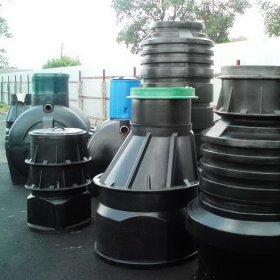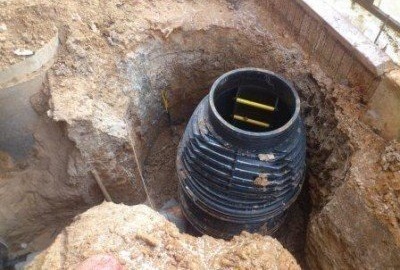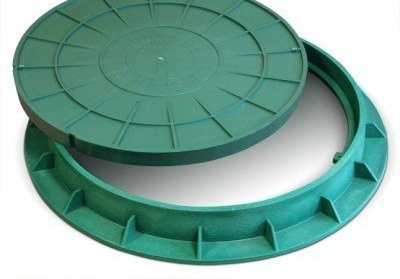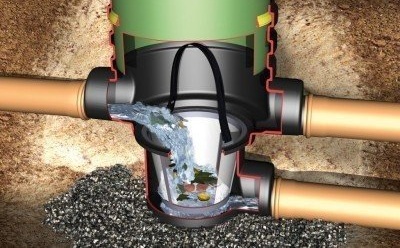Plastic sewer wells: the better concrete + classification, device and standards

According to SNiP, each sewerage must be provided with a certain number of special wells that allow you to maintain the system and maintain it in working condition. Not so long ago, concrete rings were considered the best choice for creating such structures, but today they are confidently replaced by plastic sewer wells.
Why is a plastic well better than concrete?
The answer to this question is obvious, since modern plastic:
- lighter in weight;
- possesses high durability;
- much more convenient than concrete when loading, unloading, transporting;
- tolerates even very low temperatures;
- demonstrates low thermal conductivity;
- easy to maintain;
- allows to achieve high tightness of connections;
- resistant to frost, corrosion, aggressive environments, etc.
You can purchase standard polyethylene wells or order their production according to an individual project. Due to its excellent performance characteristics, the risk of accidents when using plastic wells is minimal.
Please note: Plastic is also successfully used for ready-made wells made of concrete rings. The waterproofing properties of such structures deteriorate over time. You can radically correct the situation with the help of a plastic insert in the well, which will reliably protect the soil from seepage of sewage. Such a solution can be effective even with increasing groundwater levels.
The advantage of concrete structures can be considered a relatively low price, however, due to changes in the requirements for the minimum diameter of wells for polymer structures, you can spend not too much. More recently, plastic was considered insufficiently frost-resistant, unlike concrete, but modern compositions can easily withstand frosts up to 70 degrees.
Design Features and Manufacturing Standards
Conventional polymer wells are a cylindrical vertical shaft, to the bottom of which a wastewater tray (kineta) is attached. Depending on the operating conditions, these trays are made with bending, with several branches or in the form of a combination of branches and bending. In addition, holes are made in the well for the inlet and outlet pipes, and also provide it with a ceiling with a hatch. The well itself is often made of corrugated plastic, since it is easier to adjust in length. In addition, this creates some compensation for the load on the bottom, which increases the life of the well.
Please note: Do not try to reduce costs by abandoning the wastewater tray. Practice shows that its absence prevents the normal removal of effluents from the well, which leads to its rapid pollution, and sometimes to breakdowns.
Such designs are successfully used for household and industrial and storm sewer structures. You can adjust the length of the shaft using a special part - an extension cord. They must be interconnected until the required length is reached. The use of extendable extension cords may also be quite acceptable.
Pay attention to the hatches for plastic wells, which vary depending on the load that they can withstand.
- Standard A15 can withstand up to 1.5 tons and is suitable for installation on pedestrian walkways, as well as in the green zone.
- The B125 standard is intended for places such as parking lots, parks and sidewalks, as it can withstand the effects of cargo up to 12.5 tons.
- The C250 standard, withstanding a load of up to 25 tons, is used in the construction of sewers, which runs under city roads
- The D400 standard (load up to 40 t) is designed for highways.
A15 standard light hatch can be installed directly on the neck of the well. Under the remaining hatches, it is necessary to use a special unloading ring or a telescopic telescopic tube. When using wells made of polymeric materials, you can change the height of the structure if necessary, for example, if the pavement is being replaced. When using concrete rings, it is almost impossible to increase the length of the well.
Functional types of sewer wells
According to the purpose, plastic wells intended for sewerage are divided into:
- viewing;
- absorbing;
- water intake.
So, not a single sewer pipeline can do without inspection wells. They are necessary for monitoring the state of the system, for its maintenance, providing access for special equipment, etc.
Viewing wells without fail install in places:
- branch connections;
- turn of the sewer;
- pipe slope changes;
- transition to pipes of a different diameter.
In addition, inspection wells must be placed at a certain distance from each other. The larger the diameter of the well, the greater the normative permissible distance between the inspection wells.
But absorption wells are used where there is no way to divert waste water. Instead of installing kinetas, the bottom of such structures is covered with drainage: sand, gravel, gravel, broken brick, etc. The drains are gradually filtered through the drainage layer and fall into the ground.
Water collects in the intake wells, and then is discharged into an open reservoir, into a drainage system or into an open ditch. The cover of such plastic sewer wells should be leakproof to prevent overflow of sewage after heavy rains.
Please note: The minimum insertion height of drainage pipes into plastic wells is 400 mm. As a result, the bottom of the structure turns into the so-called sand trap - a space in which particles of sand settle.
Dimensional Tolerances
Previously, there were standards according to which the minimum diameter of a sewer well should be 100 centimeters. This space was necessary so that the worker could go down and clean or repair the structure. The use of plastic wells, as well as modern technology, has changed this situation.
At not too great depths, it is appropriate to use smaller wells. Models of plastic wells are produced with a diameter of 315 mm or more. This allows you to reduce not only the cost of the structure itself, but also less time, effort and money to spend on installing a small structure.






2 comments